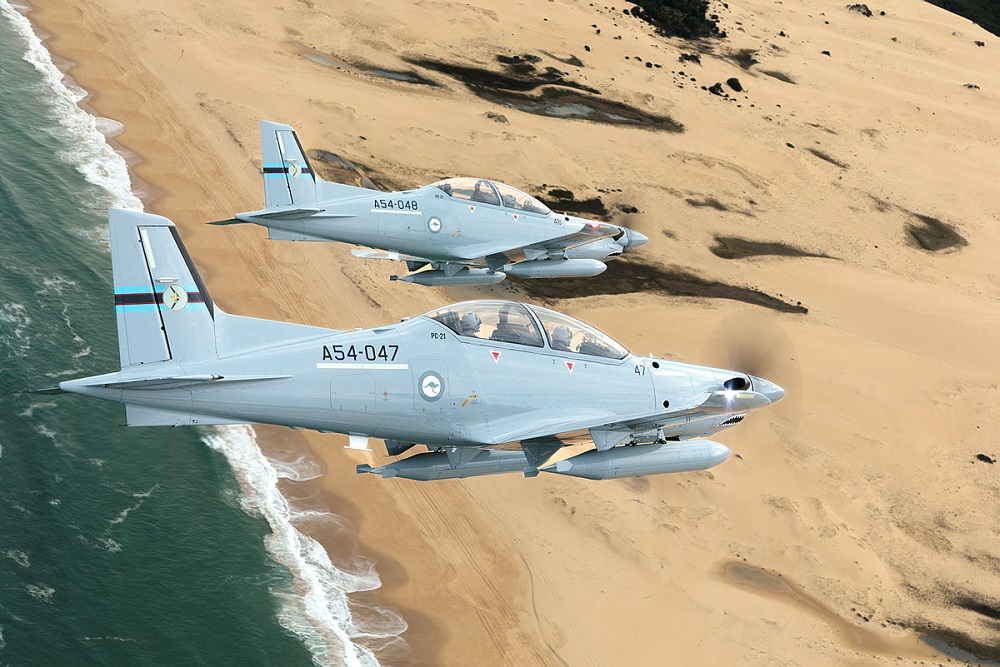
Sea state
Russian President Vladimir Putin has announced that the Russian Navy will receive 30 new combat ships of various classes later this year. Putin made the announcement after reviewing a parade of warships and nuclear submarines with Defence Minister Sergei Shoigu and Navy Commander-in-Chief Nikolai Yevmenov at Russia’s annual Navy Day event in St Petersburg on 30 July. The acquisition is part of Putin’s plan to build up Russian naval strength as outlined in the 2022 national maritime policy.
The Royal Australian Navy, Japan Maritime Self-Defense Force, Republic of Korea Navy and US Navy took part in exercise Pacific Vanguard last month in Guam. The exercise was designed to strengthen the skills of the four navies in maritime, anti-submarine-warfare and air-warfare operations. It included live-fire missile drills and advanced manoeuvring scenarios to enhance interoperability among the participating forces.
Flight path
The Royal Australian Air Force and the US Air Force Special Operations Command participated in Exercise Teak Action 23 in July. The missions, which took place over the Hawkesbury region, RAAF Base Williamtown and the Singleton Military Area, provided opportunities for the RAAF’s No. 4 Squadron combat control team and No. 35 Squadron to train with their US counterparts. The exercise aimed to improve the preparedness of both nations’ air forces to rapidly respond to tasks in the Indo-Pacific.
A Canadian CC-150 Polaris military transport plane and a French Air and Space Force A500M ‘came into contact’ last month at a US air base in Guam. Both aircraft had been in Guam for US-led Exercise Mobility Guardian when the collision occurred. The Canadian and French governments responded to the incident in separate statements, noting that there were no reported injuries. The incident is currently under joint investigation by Canadian, French and US authorities.
Rapid fire
Hanwha Defense Australia has been granted a contract worth up to $7 billion to supply the Australian Army with 129 next-generation infantry fighting vehicles. The Australian government selected the AS21 Redback after it narrowly outperformed Germany’s Rheinmetall Lynx in testing, ending a five-year tender process to replace the army’s Vietnam-era armoured personnel carriers. The landmark decision is set to turbocharge Australia–Korea defence and economic cooperation. The first vehicle will be delivered in early 2027 and the final vehicle by late 2028.
British soldiers in the Royal Corps of Signals have rehearsed combined-arms training in a virtual environment. More than 40 personnel participated in the ‘virtual equivalent’ of tactical training using the Interim Combined Arms Virtual Simulation system, or ICAVS. The system allows soldiers to practice driving, manoeuvre and battlefield skills in different scenarios—from crossing rivers to engaging enemy forces—using game controllers, virtual-reality headsets and racing-simulator cockpits. Complementing live-fire exercises, the technology is a carbon- and time-efficient way to maintain operational readiness.
Final frontier
India’s PSLV rocket successfully launched seven Singaporean satellites into low-earth orbit on 29 July. The launch marked India’s sixth successful orbital launch of the year, following the robotic lunar lander Chandrayaan-3 mission. The primary payload, DS-SAR, is a remote-sensing satellite developed in partnership with Singapore’s Defence Science and Technology Agency and ST Engineering. It features an all-weather, day and night coverage synthetic aperture radar from Israel Aerospace Industries. The satellites will serve various Singaporean government agencies and commercial customers.
China’s state-owned space and defence contractor CASIC will launch a very low-earth orbit (VLEO) constellation of 300 satellites, with the first planned for December and the rest by 2030. The constellation aims to provide information every half-hour. It will leverage the advantages of shorter distance and intelligent algorithms to achieve low-latency satellite-to-satellite and satellite-to-earth communications. While not without challenges, VLEO satellites are cheaper and have lower power demands than other options.
Wired watchtower
According to a New York Times report, the US government has undertaken investigations into malware planted by potentially state-sponsored Chinese hackers that is capable of cutting off power, water and communications to US military bases. Microsoft first discovered the malware in May in critical infrastructure systems in Guam, which hosts a massive American air base, and ‘elsewhere in the US’. A recent ASPI report highlighted this campaign as an example of ‘a good place to start looking’ for Chinese AI-enabled technologies targeting democracies.
The Kenyan government’s e-Citizen portal, which provides access to more than 5,000 government services, has been targeted in a cyberattack. Critical services such as transport, power, electricity and railways were disrupted by the attack. Sudanese hacking group Anonymous Sudan claimed responsibility and said it had taken passport data, but the Kenyan government countered that no data had been stolen. The group declared that the attack was triggered by Kenya’s unwanted interference in Sudan’s internal affairs. Notably, it followed Sudan’s rejection of Kenya’s attempts to mediate the ongoing Sudanese conflict.

